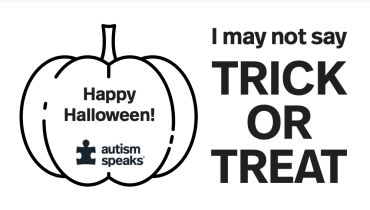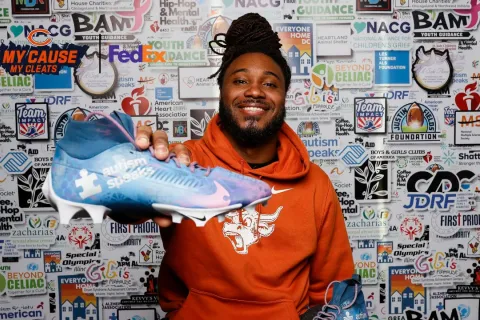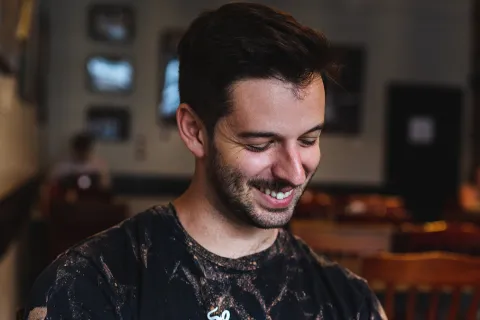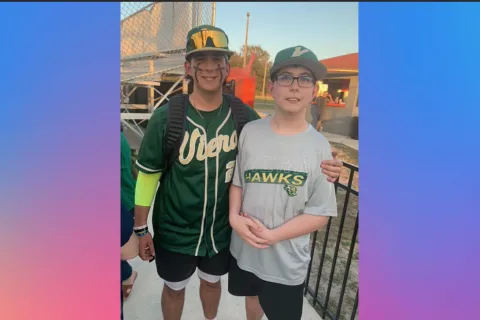Happy Halloween: A guide for making the holiday fun for everyone
Halloween is a fun night of costumes and candy for kids of all ages. But for those on the autism spectrum, scary sounds and decorations, tight or scratchy costumes and going out at night can be a lot to handle. Helping your child know what to expect from Halloween can help make it a fun time for everyone.
To help you get Halloween off to a good start:
- Use our personalized teaching story All About Halloween to help your child learn what to expect around Halloween. You can add your own pictures and text to the story. It also includes a badge that autistic children can wear to let candy-givers know that they may communicate differently than other trick-or-treaters.
- Hang one of these signs on your door or window to let visitors know that your home is autism-friendly. And use our templates to carve and decorate pumpkins with your family.
- Use the tips below to help you manage decorations, costumes and trick-or-treating.
Scary decorations, places and sounds
Halloween decorations can be scary. Ghosts, goblins, witches and black cats are everywhere! And they often come with bright, flashing lights and loud sounds. Even though they’re just for fun, they may be frightening. They also may be overwhelming to those with sensory issues.
Here’s what you can do to make Halloween sights and sounds less challenging for your child:
- Remind your child that the decorations and sounds are just pretend. They’re not real. They’re just a silly way for people to celebrate Halloween.
- Be aware of things like moving decorations, fog machines and flashing lights. These may make your child uncomfortable or lead to unsafe or impulsive behaviors.
- Take a sensory toy, headphones or ear plugs with you when you go somewhere that may have loud noises and sounds.
- If decorations, places and sounds make it hard for your child to enjoy Halloween activities, limit them. Skip them and find sensory-friendly activities instead. Check out our calendar of sensory-friendly events to find activities in your area.
Costumes
Lots of kids wear costumes on Halloween. But there are no rules around them. Here are five ideas that are both autism- and budget-friendly for you to try. The most important thing is that your child is happy and comfortable.
If your child does dress up:
- Be aware of sensory needs when helping your child choose a costume. Some materials may be itchy, smell weird or be uncomfortable for your child.
- Think about your child’s special interests when helping them choose a costume. For example, suggest that they dress up as their favorite superhero or other character. Allow your child to dress up in their preferred costume without judgment, no matter what their age.
- Have your child put on the costume a few times before Halloween so they get used to how it feels.
- Don’t use face painting or costumes that are challenging for your child’s sensory experience.
- Think about getting the costume in a larger size so your child can wear their own clothes underneath.
Children may be stressed when others wear costumes that make it hard to see their face. To help them when others wear masks and face paint:
- Explain that even if a friend is wearing a mask or face paint, it’s still their friend underneath.
- Ask the friend to take the mask off for a few minutes so your child can see that it’s someone they know.
- Have their brothers and sisters wear their costumes and masks around the house so your child can see that it’s still them underneath.
Trick-or-treating
If your child wants to trick-or-treat, here are some things you can do to make it enjoyable:
- Explain what happens during trick-or-treating so your child knows what to expect. Describe who they’ll see and what they’ll do and say. Use our teaching story and adapt it for your child.
- If you child is nonverbal or cannot say "trick or treat," you can print this sign to take with them. Please note: Disclosing for a child is an important decision. If a child is able to be a part of making the decision, then that is also an opportunity to teach a child basic self-advocacy skills in self-disclosure.
- Check to see if there are “trunk or treat” activities at your school or in your community. For trunk or treat, parents gather in a parking lot and decorate the trunks of their cars for Halloween. Kids can trick-or-treat from car to car. If trunk or treat happens before Halloween, it’s a good time for your child to practice trick-or-treating before the real night.
- Trick-or-treat in your neighborhood. Go with friends and neighbors. Staying close to home means you can get home quickly to take a break if you need to.
- If your child doesn’t want to go out at night, go earlier in the evening before it gets dark. If you do go at night, take a flashlight.
- Take a sensory toy, headphones or ear plugs with you.
- If your child is non-speaking or has limited communication, help them decide if they’d like to use the badge in the teaching story to let others know that they communicate differently.
Like wearing a costume, trick-or-treating isn’t a Halloween requirement. If your child doesn’t want to trick-or-treat, that’s fine too! Suggest that they stay at home and help give out candy to trick-or-treaters. If that’s still too much stimulation, they can relax with a book or movie.
If you have friends or neighbors with autism, invite them trick or treating with you and your group. They may not have a group of their own to go with. This kind gesture will make them feel welcome and included, and give them a chance to participate in the fun!
Safety
Halloween can be hectic and unpredictable, so it's important to keep safety at the top of your mind. Even in familiar environments, new sights and sounds can increase the risk of wandering. Here are some ways you can help your child stay safe:
- Before you go trick or treating, take a picture of your child in their costume. This will ensure you have a recent picture in case they get lost.
- If your child may wander, have them wear light-up sneakers or glow-stick bracelets to make them easier to spot after dark.
- Wear something that distinguishes you from the crowd so your child can easily find you.
- Make sure your child has identification on them and a way to communicate if they are lost. If they are nonverbal, write your name and cell phone number on paper and put it in your child's pockets.
General tips to fend off the spread of germs and to respect everyone's personal space:
- If you give out treats, consider sitting outside and lining up individually prepackaged goodies on a table for children to take.
- Trick or treat in small groups, and make sure give space to other trick-or-treaters, while knocking on doors and out on sidewalks.
- Wash your hands when you return home from trick or treating.










